Amongst other things I collect U.S. Civil War arms and militaria.
Owning a Confederate P-53 Enfield rifle musket is a real prize----particularly for a Canadian collector.
I was very lucky to get connected to Bill Adams who is the 'go to guy' in the U.S. for these Confederate Enfields.
This is the only Confederate piece that I own.
Most of these comments are from Bill Adams.
24 bore is .58 calibre, typical of many Enfields made for the American market. The Confederates did not stipulate that .577 was the regulation calibre until 1862. The federals stuck with .58. Ramrods, butt plates, bayonets, and bayonet frogs were all numbered together as a "stand" of arms. That followed British regulation. The bayonets and ramrods were not readily interchangeable and therefore all of the components were numbered together.
Bill also advises that some Enfields made for the US, in 24 bore, in the early part of the war, were actually bought by the Rebels, and that might explain the bore size.
The sling is not correct to the piece. It is probably from a Lee-Metford or even an SMLE.

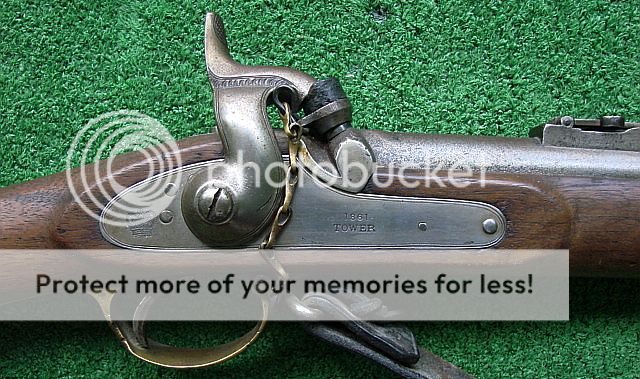
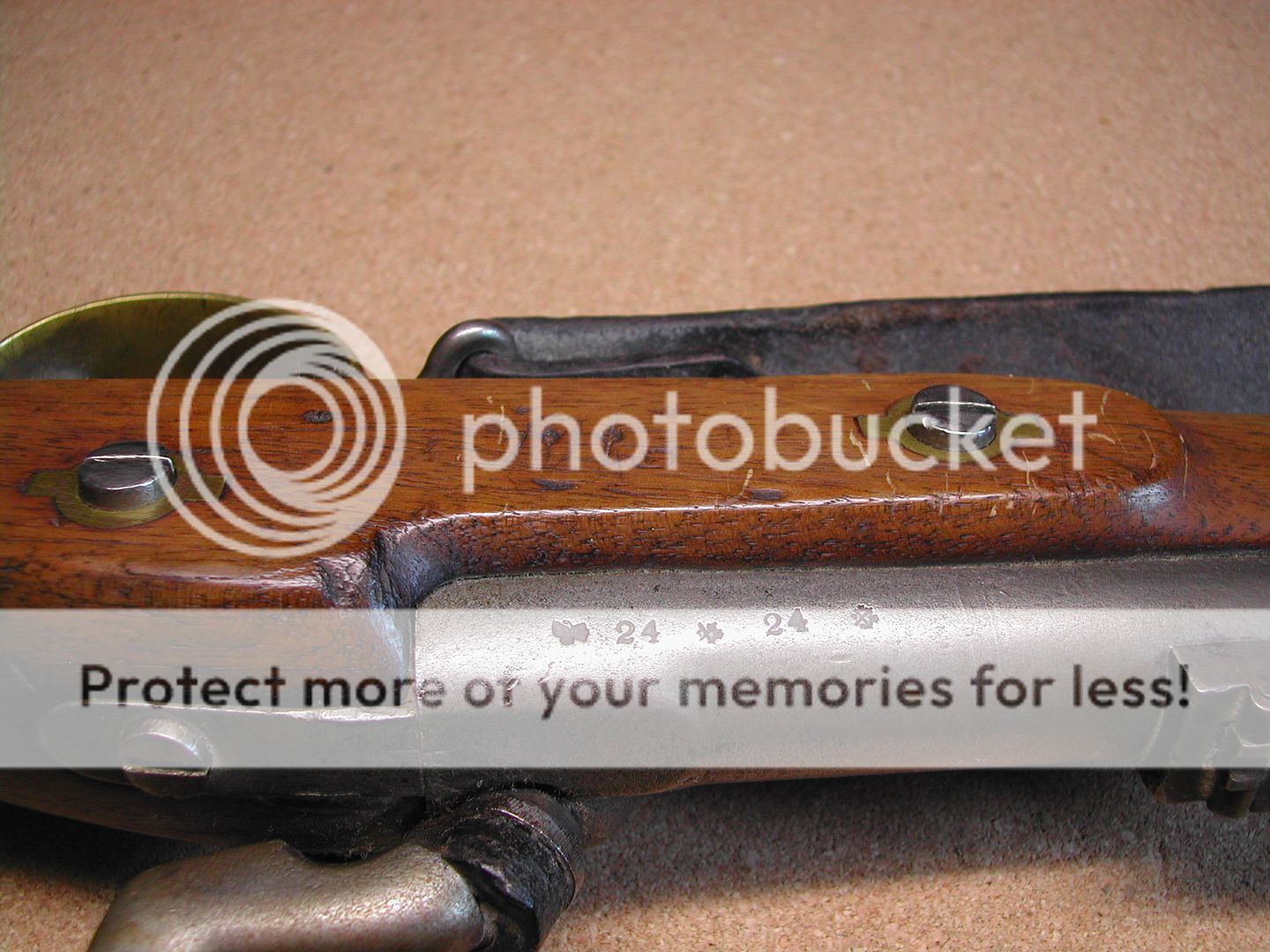
#1121 is the Confederate "control number".

#1121 was ready for shipment from London in August 1861 and was in the number series initially purchased by Georgia.
I found my listings of the crates that were missing from the London manifests. All of the crates are there except for #57, which seems very strange. #58 had P53's #1141-1160; #59 had 1161-1180, etc. Crates 1-7 and 58-62 came from arms merchant Wm. Grazebrook on May 1st 1861 and were marked with the G cypher. With crate #56 having been marked for Gov. Brown of Georgia and #58 having been marked G for Georgia, chances seem good that crate #57 that contained 1121 was also destined for Georgia.
-----------------------------------------
From the photos, it appears that #1121 was cleaned and the stock was scraped at some point. Given the number and the Birmingham proofs, it was probably made by C. W. James.
This Enfield was a definite CS purchase; the engraved numbers and the remnant of the JS Anchor stamp confirm that.
#1121 could have been scraped down a hundred years ago. The stock was apparently refinished at some point and it is possible that it was refinished in order to sell it. Even the Springfield Armoury refinished Confederate arms and sold them in the 1870's and 1880's.
I do not see any traces of a G, but you are lucky in that all of the JS Anchor stamp was not scraped away.
'JS' stands for John Southgate, Major Edward Anderson (Caleb Huse's "boss") recorded in his dairy that Southgate had been retained as an inspector.
Yes, G is for Georgia. There are many variants of the G stamp that have been applied to Enfields in recent times. The large size G stamp often was light to begin with and cleaning, scraping, and sanding over the years removes the traces of the letter.
Examples of the 'G' for Georgia marking.

The remnant of the faint JS Anchor stock marking.
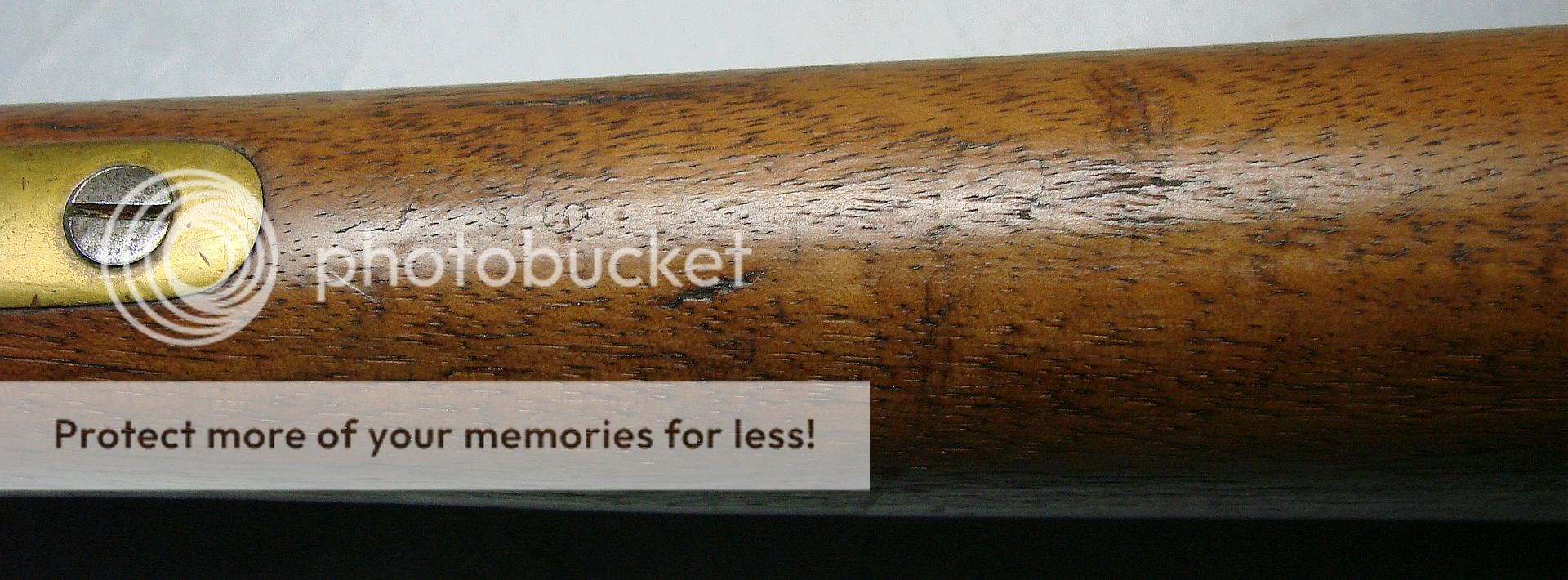
This is what the JS Anchor marking would look like.
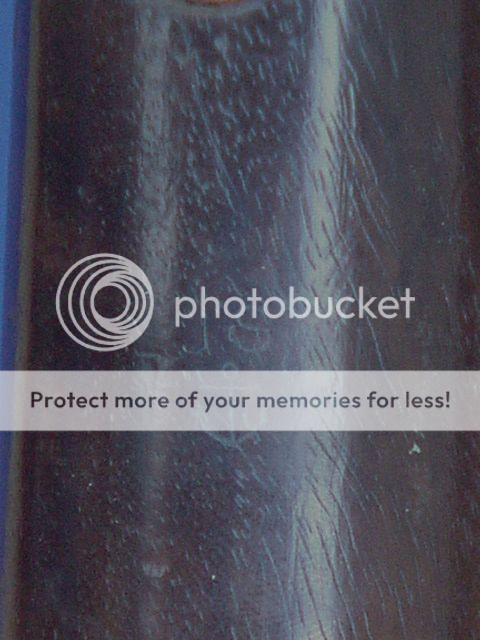
#1121 may have been on the Fingal as 7520 Enfields were aboard the Fingal when it arrived in Savannah.
The Georgia arms aboard the Fingal did not go to Georgia; they were sent to the Army of Tennessee.
A sketch of the Fingal.
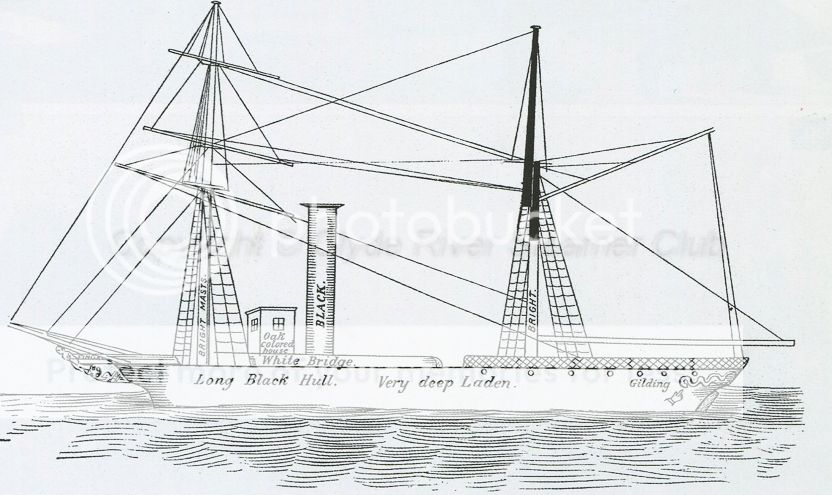
CSS Fingal "A Great Run For The Confederacy"
Confederate agent in London James D. Bulloch received a dispatch from Richmond in the summer of 1861 stating that the Confederacy needed to outfit 500,000 new forces, and that agents in England were to purchase the arms and supplies. Disturbed by the outrageous rates charged to ship goods through the blockade, Bulloch went to Greenock, Scotland, where he used Confederate government funds to purchase the Fingal, an iron-hulled screw steamer. Clandestine measures were taken to obscure the Fingal's true ownership, mission, and cargo. Loaded with more than 11,000 rifles, as well as pistols, swords, sabers, ammunition, four cannon, seven tons of shell, leather, medicines, seamen's clothing, blankets and more, the ship quietly slipped out of Greenock on the night of October 11, 1861.
On arriving in Bermuda on November 2, the Fingal took on a pilot who knew Savannah's inlets, but it was not until the ship left Bermuda on November 7 that her crew was informed of their destination; gamely, they agreed to defend the ship if necessary against blockaders. Eluding detection in the dense fog off the Georgia coast, the Fingal slipped through the blockade and delivered her goods in Savannah on November 14, 1861. The ship's arrival gave the Fingal the distinction of having brought into the Confederacy the largest, single-trip delivery composed entirely of naval and military materiel.
Reloaded with Confederate cotton, the CSS Fingal was kept inland by the constant presence of Union blockaders. She was converted into an ironclad and renamed the CSS Atlanta, and in late May 1863 she steamed downriver only to get stuck on a mud bank because of her weight and deep hull. Refloated and repaired, the Atlanta left on June 17 to attack a fleet of Union monitors. The awkward ironclad ran aground three times before the monitor USS Weehawken blasted the stranded ship at close range. The Atlanta surrendered, was taken as a prize, and assigned to the Union fleet.
-----------------------------------------------------------------
This is what the Fingal (CSS Atlanta) looked like after it was captured by the Federals-- it had been converted into an Ironclad by the Rebels.



David
Owning a Confederate P-53 Enfield rifle musket is a real prize----particularly for a Canadian collector.
I was very lucky to get connected to Bill Adams who is the 'go to guy' in the U.S. for these Confederate Enfields.
This is the only Confederate piece that I own.
Most of these comments are from Bill Adams.
24 bore is .58 calibre, typical of many Enfields made for the American market. The Confederates did not stipulate that .577 was the regulation calibre until 1862. The federals stuck with .58. Ramrods, butt plates, bayonets, and bayonet frogs were all numbered together as a "stand" of arms. That followed British regulation. The bayonets and ramrods were not readily interchangeable and therefore all of the components were numbered together.
Bill also advises that some Enfields made for the US, in 24 bore, in the early part of the war, were actually bought by the Rebels, and that might explain the bore size.
The sling is not correct to the piece. It is probably from a Lee-Metford or even an SMLE.



#1121 is the Confederate "control number".

#1121 was ready for shipment from London in August 1861 and was in the number series initially purchased by Georgia.
I found my listings of the crates that were missing from the London manifests. All of the crates are there except for #57, which seems very strange. #58 had P53's #1141-1160; #59 had 1161-1180, etc. Crates 1-7 and 58-62 came from arms merchant Wm. Grazebrook on May 1st 1861 and were marked with the G cypher. With crate #56 having been marked for Gov. Brown of Georgia and #58 having been marked G for Georgia, chances seem good that crate #57 that contained 1121 was also destined for Georgia.
-----------------------------------------
From the photos, it appears that #1121 was cleaned and the stock was scraped at some point. Given the number and the Birmingham proofs, it was probably made by C. W. James.
This Enfield was a definite CS purchase; the engraved numbers and the remnant of the JS Anchor stamp confirm that.
#1121 could have been scraped down a hundred years ago. The stock was apparently refinished at some point and it is possible that it was refinished in order to sell it. Even the Springfield Armoury refinished Confederate arms and sold them in the 1870's and 1880's.
I do not see any traces of a G, but you are lucky in that all of the JS Anchor stamp was not scraped away.
'JS' stands for John Southgate, Major Edward Anderson (Caleb Huse's "boss") recorded in his dairy that Southgate had been retained as an inspector.
Yes, G is for Georgia. There are many variants of the G stamp that have been applied to Enfields in recent times. The large size G stamp often was light to begin with and cleaning, scraping, and sanding over the years removes the traces of the letter.
Examples of the 'G' for Georgia marking.

The remnant of the faint JS Anchor stock marking.

This is what the JS Anchor marking would look like.

#1121 may have been on the Fingal as 7520 Enfields were aboard the Fingal when it arrived in Savannah.
The Georgia arms aboard the Fingal did not go to Georgia; they were sent to the Army of Tennessee.
A sketch of the Fingal.

CSS Fingal "A Great Run For The Confederacy"
Confederate agent in London James D. Bulloch received a dispatch from Richmond in the summer of 1861 stating that the Confederacy needed to outfit 500,000 new forces, and that agents in England were to purchase the arms and supplies. Disturbed by the outrageous rates charged to ship goods through the blockade, Bulloch went to Greenock, Scotland, where he used Confederate government funds to purchase the Fingal, an iron-hulled screw steamer. Clandestine measures were taken to obscure the Fingal's true ownership, mission, and cargo. Loaded with more than 11,000 rifles, as well as pistols, swords, sabers, ammunition, four cannon, seven tons of shell, leather, medicines, seamen's clothing, blankets and more, the ship quietly slipped out of Greenock on the night of October 11, 1861.
On arriving in Bermuda on November 2, the Fingal took on a pilot who knew Savannah's inlets, but it was not until the ship left Bermuda on November 7 that her crew was informed of their destination; gamely, they agreed to defend the ship if necessary against blockaders. Eluding detection in the dense fog off the Georgia coast, the Fingal slipped through the blockade and delivered her goods in Savannah on November 14, 1861. The ship's arrival gave the Fingal the distinction of having brought into the Confederacy the largest, single-trip delivery composed entirely of naval and military materiel.
Reloaded with Confederate cotton, the CSS Fingal was kept inland by the constant presence of Union blockaders. She was converted into an ironclad and renamed the CSS Atlanta, and in late May 1863 she steamed downriver only to get stuck on a mud bank because of her weight and deep hull. Refloated and repaired, the Atlanta left on June 17 to attack a fleet of Union monitors. The awkward ironclad ran aground three times before the monitor USS Weehawken blasted the stranded ship at close range. The Atlanta surrendered, was taken as a prize, and assigned to the Union fleet.
-----------------------------------------------------------------
This is what the Fingal (CSS Atlanta) looked like after it was captured by the Federals-- it had been converted into an Ironclad by the Rebels.



David
Last edited:


























































































